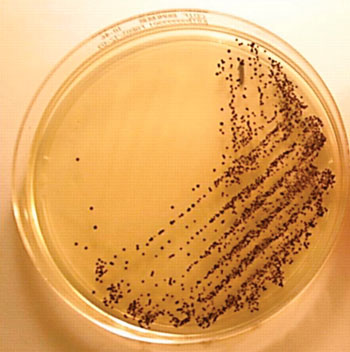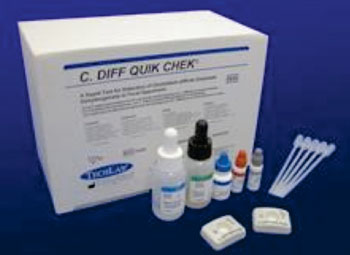Stability of Fecal Specimens for Bacterial Diagnostics Investigated
By LabMedica International staff writers
Posted on 23 Oct 2014
To test for Clostridium difficile in stool specimens transported from remote geographic locations is a challenge due to long transit times, often at room temperature.Posted on 23 Oct 2014
Discrepancies in C. difficile detection rates using nucleic acid amplification tests (NAAT) and antigen, culture and cytopathic effect (CPE) tests have been reported which may be due differences in the load of organisms in the stool, sometimes very low in asymptomatic carriage, and determining the viable count for C. difficile may be needed to differentiate between asymptomatic colonization versus true disease.
Microbiologists at the St. Boniface Research Center (Winnipeg, MB, Canada) assessed the impact of storage at room temperature versus 4 °C for up to 72 hours on the stability of glutamate dehydrogenase antigen, Toxin A and B antigens, toxigenic culture and cytopathic effect testing. Twelve diagnostic stool samples that were tested on the day of collection and shown to be C. difficile toxin positive were used for this study. Sample aliquots of each stool were stored at room temperature and 4 °C and testing was repeated at 24, 48 and 72 hours.
Stools that were positive for the presence of glutamate dehydrogenase (GD) using the C.DIFF QUIK CHEK kit (TECHLAB; Blacksburg, VA, USA) and also positive for the presence of Toxin A/Toxin B when tested by TECHLAB’s TOX A/B QUIK CHEK kit were included in the study. Cytopathic effect (CPE) tests were conducted using Human Foreskin Fibroblast cells (Inter Medico; Markham, ON, Canada). The pellet from the sample used for the CPE test were processed and used to inoculate Clostridium difficile moxalactam norfloxacin (CDMN) agar (Oxoid Company; Nepean, ON, Canada). The glutamate dehyrdogenase antigen and toxigenic stool culture tests were shown to be 100% reproducible at room temperature and 4 °C for up to 72 hours. Toxin A and B antigen deteriorated to 70% by 72 hours at room temperature, but was 90% reproducible if held at 4 °C. The cytopathic effect assay was 90% reproducible by 72 hours at room temperature and 4 °C.
The authors concluded that if stool samples are held at room temperature, the Toxin A/B antigen testing is only stable for 48 hours and by 72 hours is only 70% sensitive. They recommended that for stool samples received from remote geographic locations where transport is at room temperature and may be up to 72 hours, a combination of GD antigen screening combined with NAAT is used to ensure optimal sensitivity. The study was published on June 30, 2014, in the Journal of Medical Microbiology & Diagnosis.
Related Links:
St. Boniface Research Center
TECHLAB
Inter Medico















